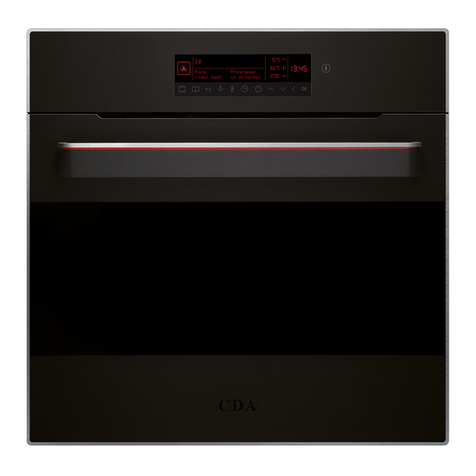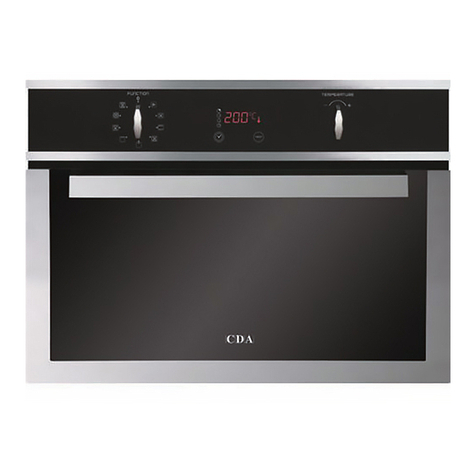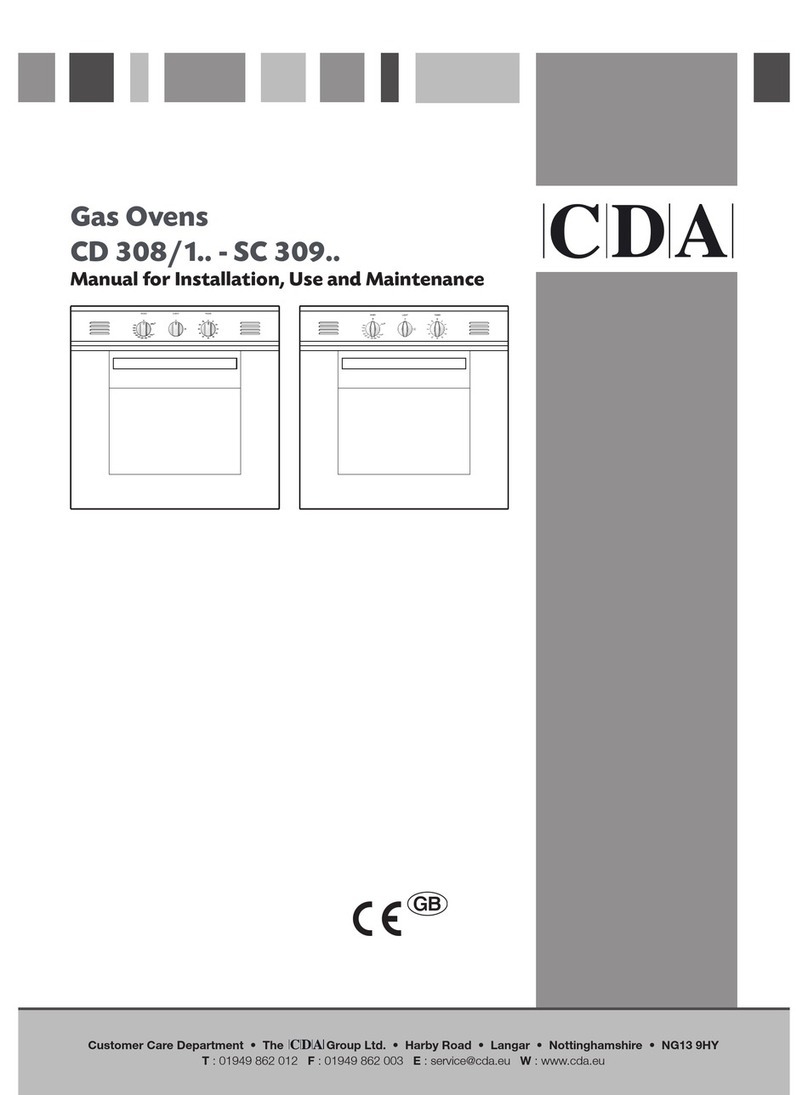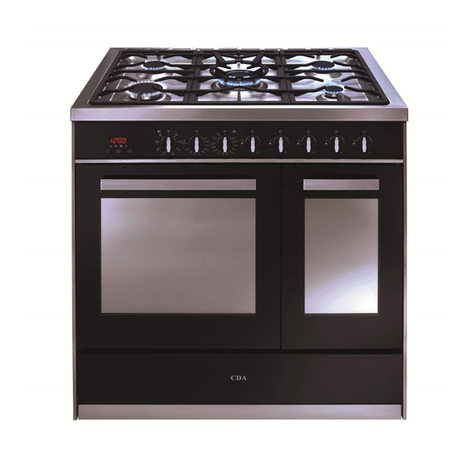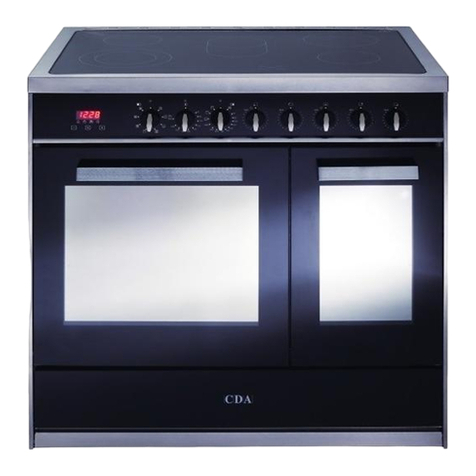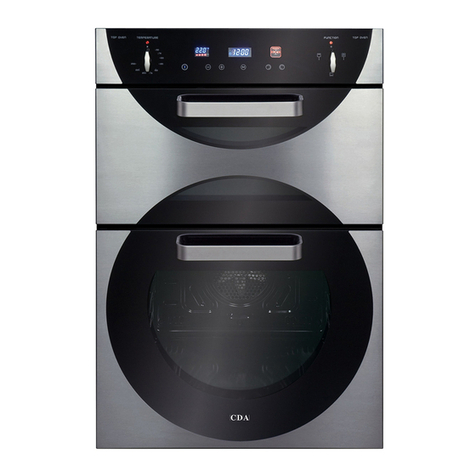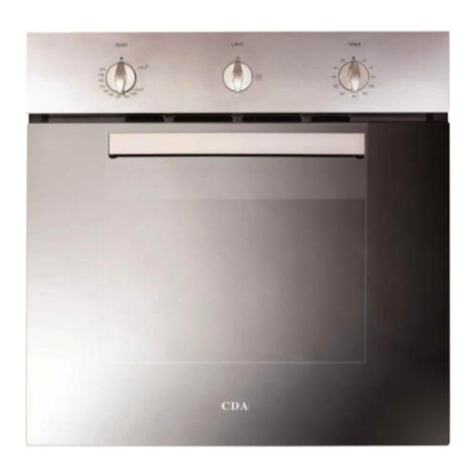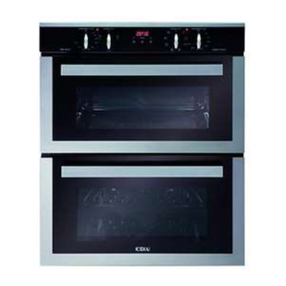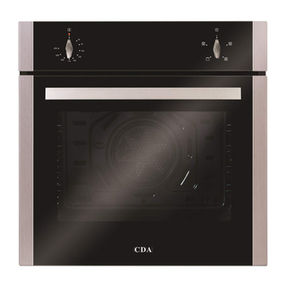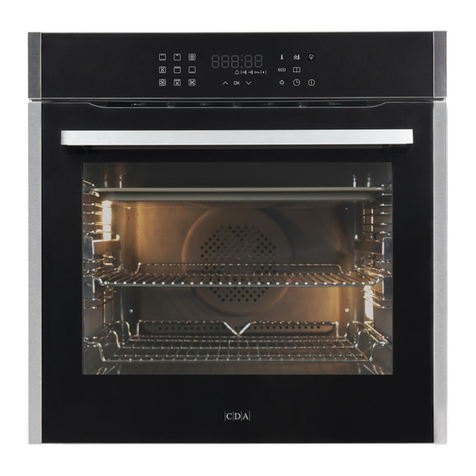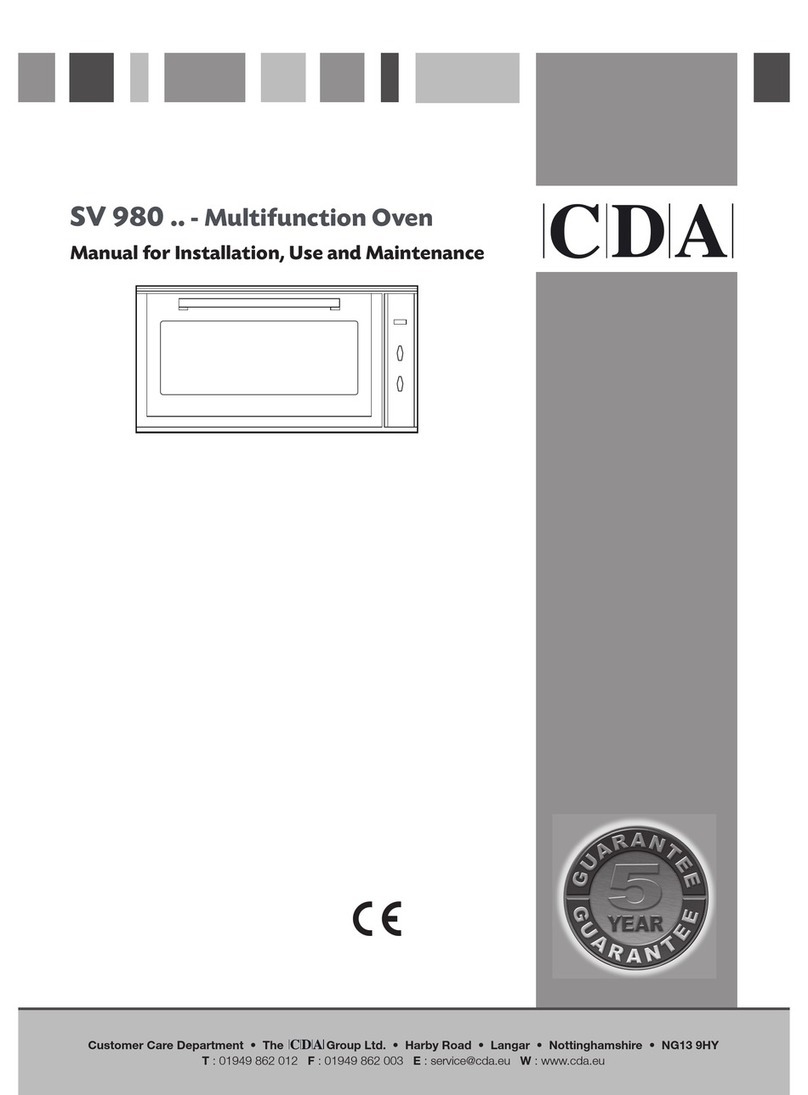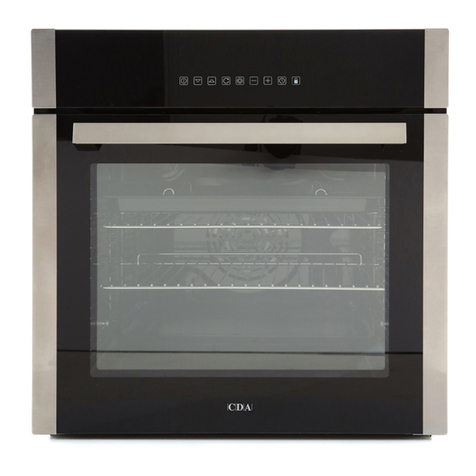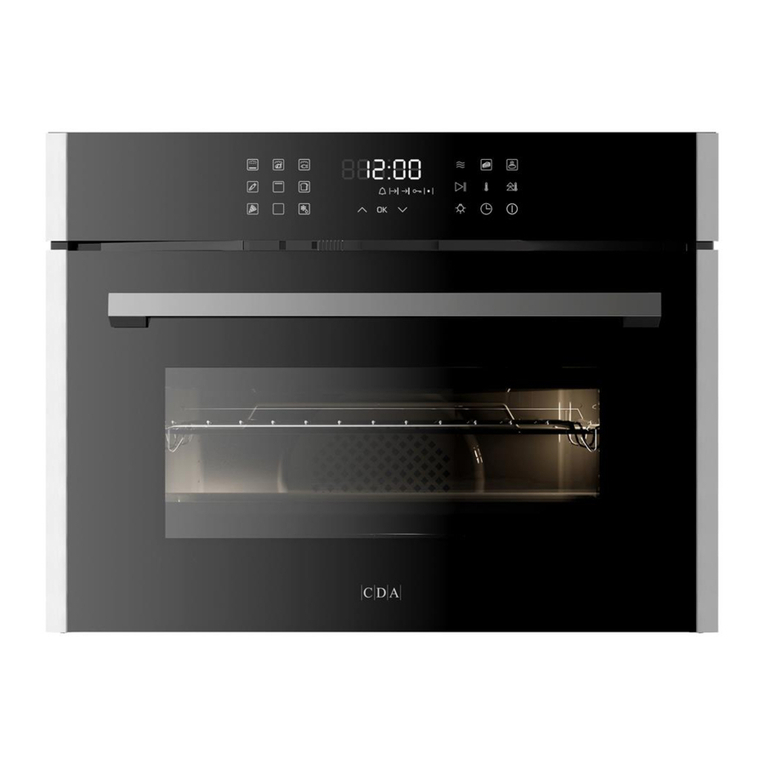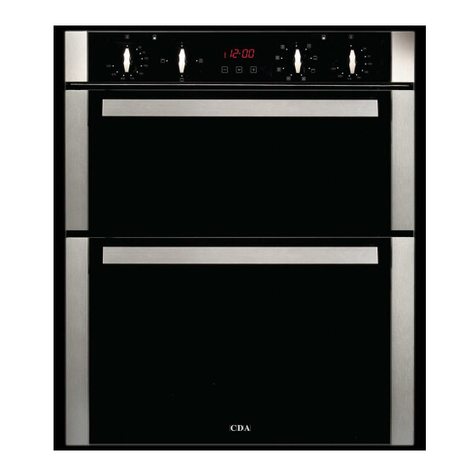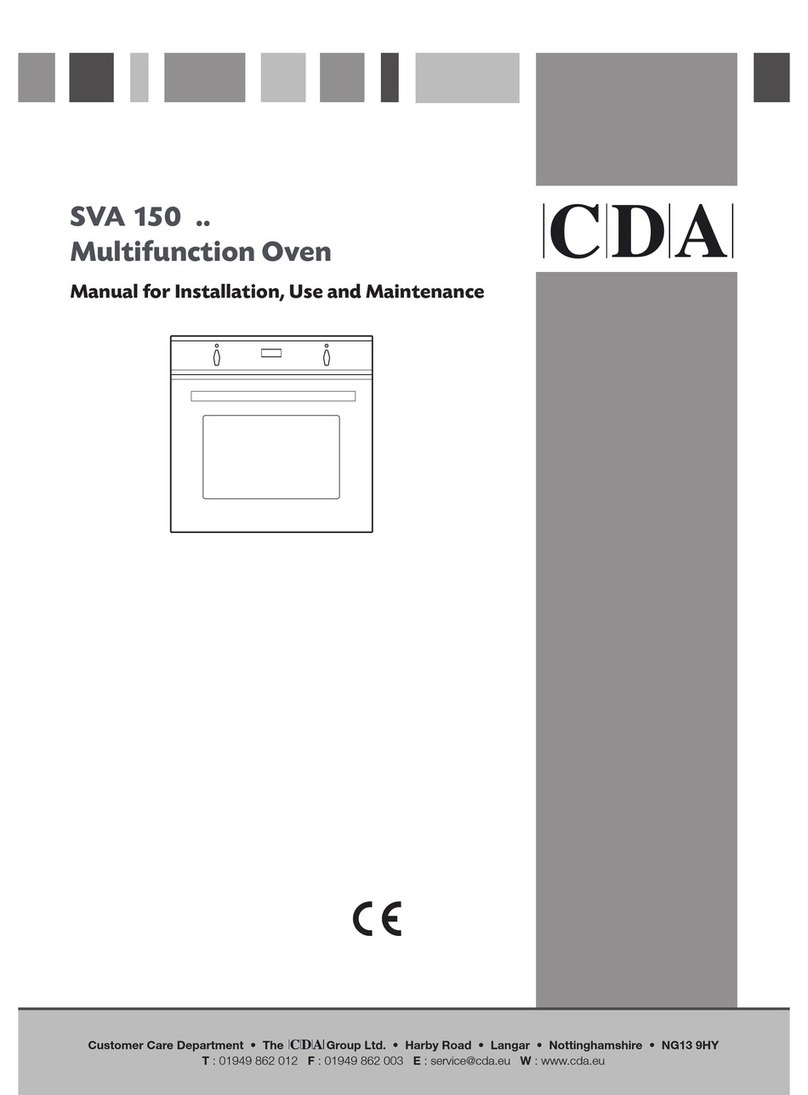
8
ADVICE FOR THE INSTALLER
Important
• The appliance is designed and approved for domestic use only and should not be installed in a commer-
cial, semi commercial or communal environment.
A marine application is not to be considered as a domestic enviroment.
Your product will not be guaranteed if installed in any of the above environments and could aect
any third party or public liability insurances you may have.
The appliance may be installed in a kitchen, kitchen/diner or a bed sitting room, but not in a room or space
containing a bath or a shower without rst consulting current regulations. The appliance must not be in-
stalled in a bed-sitting room of less than 20 m
3
.
• This appliance is to be installed only by an authorised person according to the current local regulations
and in observation of the manufacturer’s instructions.
Failure to comply with this condition will render the guarantee invalid.
• Incorrect installation, for which the manufacturer accepts no responsibility, may cause personal injury
of damage.
• This appliance shall only be serviced by authorized personnel.
• Always disconnect the appliance from the electrical supply before carrying out any maintenance opera-
tions or repairs.
• The oven can be tted in standard cabinets of 60 cm width and depth.
• Installation requires a compartment as illustrated in gures 1 and 2.
• On the lower side, the oven must lay on supports standing the oven weight.
• Remember the housing should not be free standing but be secured to the wall and/or adjacent ttings.
• Some appliances are supplied with a protective lm on steel and aluminium parts. This lm must be
removed before using the appliances.
• Important: The use of suitable protective clothing/gloves is recommended when handling or in-
stalling this appliance.
• The walls adjacent to the oven must be of material resistant to heat.
• We would point out that the adhesive which bonds the plastic laminate to the furniture must
withstand temperatures not less than 150°C to avoid delamination.
• The walls of the unit must be capable of resisting temperatures of 70°C above room temperature.
• Do not instal the appliance near inammable materials (eg. curtains).
• Under no circumstances should any external covers be removed for servicing or maintenance
except by suitably qualied personnel.
• Do not seal the oven into the cabinetry with silicone or glue; this makes future servicing dicult.
The manufacturer will not cover the costs of removing the oven, or of damage caused by this re-
moval.
• Caution: Do not lift this oven by the door handle.
WARNING: When correctly installed, your product meets all safety requirements laid down for this type
of product category.
However special care should be taken around the rear or the underneath of the appliance as these areas
are not designed or intended to be touched and may contain sharp or rough edges, that may cause
injury.
